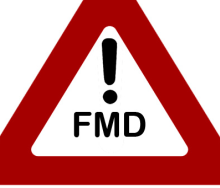Environmental Levies When last did you f lip through the pages of your tariff book, or scroll through the electronic version and look at the environmental levies? They’re in Part 3 of Schedule No1 to the 1964 Customs and Excise Act. Do you know the intention of the imposition of the environmental levies? Is it fiscal or behavioural? In other words is the intention to generate revenue for government (fiscal) or is it to change behaviour? The classic response from economists is that ‘it depends’. Let’s consider the four environmental levies. There are levies for plastic carrier bags; for electricity; for electric filament lamps; and for carbon dioxide (CO2) emissions from motor vehicles. For plastic bags it was introduced on 1 June 2004; for electricity on 1 July 2009; for electric filament lamps 1 November 2009; and for carbon dioxide (CO2) emissions from motor vehicles 1 September 2010. All are all fairly recent. If anything you could safely wager that the product scope will increase. The obvious question is whether they serve as a fiscal measure or to effect behavioural change. To effect behavioural change the tax proceeds collected should be ringfenced, which implies that the revenue would be allocated for a particular purpose and would not be spent on anything else, since if it is it is merely a fiscal measure. The environmental levy on plastic carrier bags is nothing more than a fiscal measure. The environmental levy on electricity applies to electricity generated in South Africa, with the intention to consider electricity generation from renewable resources. As Eskom, government’s power utility, generates in the order of 95% of South Africa’s electricity and then from coal, it is improbable that this tax’s proceeds would be used to address environmental considerations. Electric filament lamps – tungsten halogen and incandescent – are subject to an environmental levy. The expectation would be that the levy would be used for the disposal and recycling of the lamps. But alas it appears that it is fiscal in nature. The environmental levy for CO2 emissions from motor vehicles is an interesting one, as it is imposed on new motor vehicles and not secondhand vehicles. This begs the question – what is the intention of the Environmental Levy? Fiscal no doubt. Duty Calls Watch List Comment on the provisional payments (provisional anti-dumping duties) on Portland cement imported from or originating in Pakistan is due by 22 June 2015. Comment on the first batch of draft Customs Duty Rules to the Customs Duty Act, 2014 is due by 19 June 2015.













